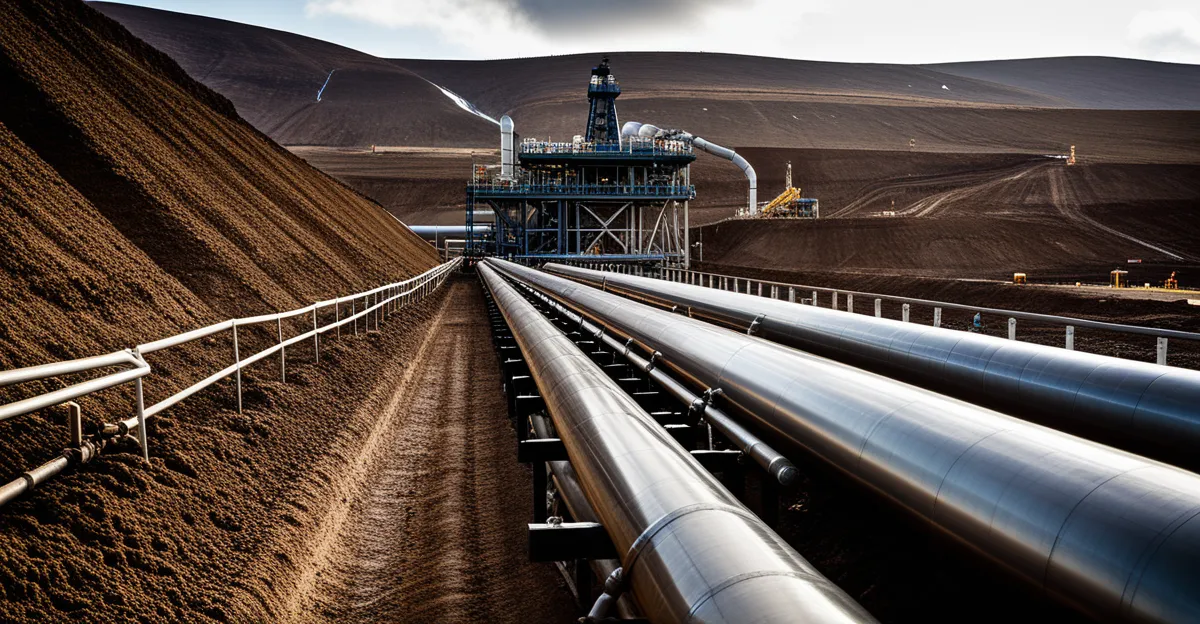Oil tube solutions play a vital role in maintaining safe, efficient oil transport and storage within the industry. Choosing the right tubing and fittings reduces leaks, improves fuel control, and simplifies maintenance. Understanding the different types, materials, and applications ensures optimal performance and reliability critical for oil handling operations. This guide offers clarity to help you make informed decisions about essential oil tube components.
Essential Functions, Types, and Uses of Oil Tubes Across Industries
Oil tubes serve as critical conduits wherever precise control, safe transport, or containment of oil is required—whether in vast industrial networks, automotive systems, or creative settings like art studios.
Additional reading : What Future Challenges Does the UK Business Landscape Face?
Industrial applications rely on line pipes and umbilicals to efficiently move oil and gas across facilities and subsea environments. These systems demand robust materials—like steel or specialized alloys—to withstand pressure, corrosion, and temperature extremes. In automotive contexts, oil pump pickup tubes, filler tubes, and dipstick tubes ensure engines remain lubricated and can be monitored and serviced easily. Selecting the right tube often means balancing material strength, compatibility with the transported fluid, and the installation environment.
In creative spheres, artists trust metal or plastic oil paint tubes for safe storage and clean application of colors. Here, quality tube packaging protects oils from air while making them easy to dispense and store. You can view more details on this page: https://www.vallourec.com/our-solutions/oil-and-gas/.
Also to read : What role does social media play in UK business branding?
Choosing between these types involves evaluating durability, resistance to chemicals, and fit for the intended application—whether it’s engine maintenance, fuel management, or art creation.
Industrial Oil Tube Solutions: Engineering, Performance, and Applications
Main Pipe Types: Line Pipes, Flowlines, Umbilicals, and Risers Used in Oil and Gas Production
Line pipes, flowlines, umbilicals, and risers form the backbone of hydrocarbon movement in oil and gas production. Precise definitions clarify their intent:
- Line pipes safely transport crude or processed oil and gas between sites or facilities, ensuring reliable, leak-resistant operation.
- Flowlines manage the direct transfer of fluids from wells to processing stations, designed for robust performance amid varying pressures and corrosive substances.
- Umbilicals integrate mechanical, electrical, and communication lines, functioning as control lifelines for remote or subsea equipment.
- Risers serve as vertical conduits, expertly linking the seabed with surface infrastructure.
Materials, Coatings, and Accessories for Performance and Durability
Optimal performance hinges on material choice and protective systems. High-grade steel and composite materials resist corrosion and stress. Coatings and accessories—from welded joints to oil tank sight gauge tubes—increase operational lifespan while supporting fuel control and minimizing maintenance. Accessories also enable effective fuel management and leak reduction, meeting stringent safety standards.
Installation, Maintenance, and Management of Industrial Oil Tubes
Oil tube installation demands precision engineering and specialist handling to ensure lasting joint integrity and leak-free operation. Regular inspection, promptly replaced fittings, and robust supply chain oil tube solutions minimize downtime and environmental risk. Accessories and specialized tubes facilitate reliable fuel level monitoring, deliver ease of maintenance, and adapt to evolving operational requirements.
Automotive and Mechanical Oil Tubes: Critical Systems for Engines and Machinery
Types and Functions
Oil pump pickup tubes draw oil from the sump to lubricate engine components. Automotive oil dipstick tubes guide the dipstick for fast, clear oil checks, while engine oil filler tubes provide a secure point for adding oil. These parts support essential engine functions—without them, accurate oil level monitoring, clean oil access, and reliable lubrication are not possible. In addition, sight gauge tubes allow for visual monitoring of oil or fluid levels in tanks and systems, simplifying checks and reducing maintenance errors.
Installation Tips, Maintenance, and Replacement
Install tubes with proper grommets or seals to prevent leaks. Common signs of a faulty tube include oil seepage, inaccurate oil readings, and unexpected drops in oil pressure. Routine inspections help catch small cracks or fitting wear early. If replacing a tube, choose materials compatible with your vehicle’s requirements. Align the new tube carefully during installation, and always verify tightness at fittings.
Specialized Tubes
For cold climates, tube oil heaters warm oil within tubes, improving start-up and reducing viscosity-related engine wear. Turbocharged engines use turbo oil drain tubes, which must resist high temperatures and drain oil efficiently from the turbocharger to avoid accumulation and premature failure.
Oil Tubes in Art: Selection, Storage, and Best Practices for Artists
Understanding oil paint tubes: types, packaging, and popular brands
Oil paint tubes come in two main categories: student-grade and artist-grade. Student-grade oils feature more fillers, while artist-grade tubes pack a higher concentration of pigment—yielding richer color and stronger coverage. Most tubes are made of aluminum for durability and to prevent chemical reactions, with sealed caps to reduce drying out.
Tube packaging for oil paints varies by brand, but generally maintains airtightness to lengthen shelf life. Renowned brands like Winsor & Newton, Michael Harding, and Williamsburg are recognized for reliability, pigment accuracy, and consistent texture. Tubes are commonly sized from 37ml to large 200ml for bulk use, simplifying oil painting supply management for any studio.
Best storage and handling solutions for oil paint tubes
Proper oil paint storage solutions prolong paint quality. Laying tubes horizontally, away from sunlight and heat, slows oil separation and pigment settling. Dedicated storage boxes or flat drawers minimize tube deformation and accidental punctures. Organize paints by color or frequency of use for easier access and reduced waste.
Tips for selecting quality oil tubes to enhance painting techniques and outcomes
Prioritize pigment load, tube durability, and trusted manufacturer reputations. Selecting a tube of oil paint for artists from reputable brands fosters better color mixing and painting techniques, supporting both vibrant layers and subtle glazes. Investing in quality tubes boosts confidence, productivity, and creative satisfaction throughout the painting process.


